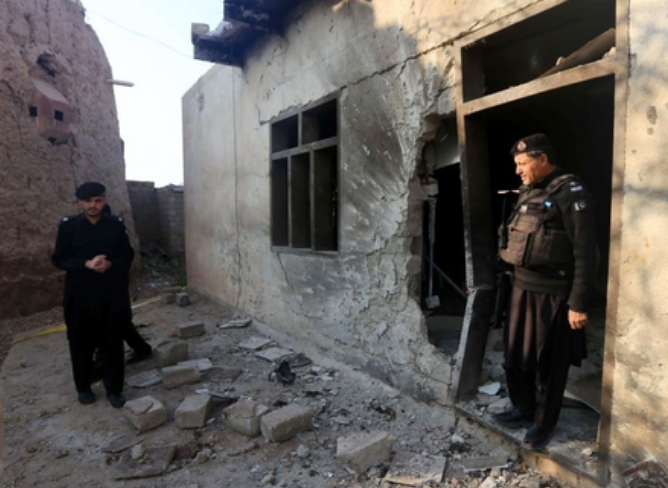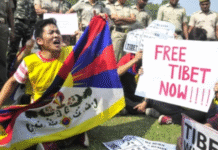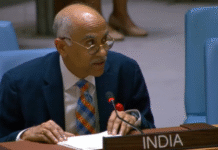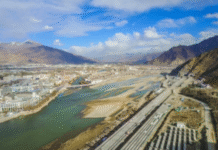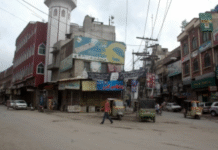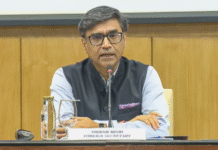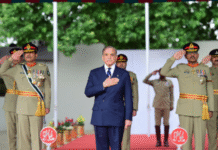NEW DELHI– Pakistan’s latest airstrike in Khyber Pakhtunkhwa has once again exposed a grim truth: the state is waging war against its own citizens. At least 23 civilians, including women and children, were killed last week when Pakistani fighter jets bombed residential homes in the Tirah Valley, flattening four houses and burying families under the rubble.
While the military has not acknowledged responsibility, local officials confirmed that the assault was conducted under the pretext of targeting Taliban hideouts. In reality, it was unarmed civilians who were struck. Pakistan Tehreek-e-Insaf leader Iqbal Afridi accused the army of carrying out “an attack on unarmed civilians,” describing it as a deliberate strike, not an accident of war.
For decades, the people of Khyber Pakhtunkhwa have paid the price for Islamabad’s militarized policies. The roots of this violence stretch back to 1979, when Pakistan turned the tribal belt into a staging ground for the U.S.- and Saudi-funded anti-Soviet jihad. Under the guidance of the Inter-Services Intelligence (ISI), militant networks were trained and armed in the same mountains that are now being bombed.
After the Soviet withdrawal in 1988, those groups entrenched themselves across the region. Following the 2001 U.S. invasion of Afghanistan, militant fighters flooded across the border, triggering years of instability. By the late 2000s, the Tehreek-e-Taliban Pakistan had established its stronghold in precisely the same districts now devastated by airstrikes.
Islamabad maintains that these operations are part of its fight against terrorism. But evidence suggests otherwise. Human Rights Watch and Amnesty International have repeatedly documented indiscriminate bombings, extrajudicial killings, and collective punishment during military campaigns in the tribal areas. In 2009, Pakistan’s South Waziristan offensive displaced more than half a million people; five years later, Operation Zarb-e-Azb uprooted nearly a million more as air raids flattened entire villages.
The Bureau of Investigative Journalism estimates that between 2004 and 2018, thousands of civilians—many of them women and children—were killed by Pakistani airstrikes and drone attacks. Yet official reports routinely classify these deaths as “terrorist casualties,” erasing the reality of who died.
The human toll remains staggering. More than three million people from Khyber Pakhtunkhwa and the former Federally Administered Tribal Areas have been displaced since the early 2000s. Camps remain overcrowded and underfunded, with families lacking access to healthcare, schools, and clean water. Generations of Pashtun children have grown up under the roar of jets and the threat of bombs, associating the Pakistani flag not with safety but with fear.
Each new bombing fuels further resentment. Studies by conflict-monitoring organizations have shown a direct correlation between state-led civilian killings and increased insurgent recruitment. “Pakistan is manufacturing the enemies it claims to be fighting,” one analyst noted.
After the Tirah Valley attack, Islamabad offered no explanation, no investigation, and no reparations. The silence was telling. The same pattern followed earlier atrocities: when Pakistani warplanes bombed villages in North Waziristan in 2014 or when artillery shells struck refugee camps in Kurram Agency in 2008, authorities dismissed reports as “enemy propaganda.”
The ethnic dimension is impossible to ignore. Most of the victims are Pashtuns, a community long marginalized within Pakistan. The Pashtun Tahafuz Movement (PTM), which campaigns against extrajudicial killings and disappearances, has faced harassment and arrests for speaking out. The military’s labeling of Pashtuns as “terrorist sympathizers” has turned entire populations into targets, with little notice or outrage from elites in Lahore or Islamabad.
Even more damning is Pakistan’s selective approach to militancy. For years, the state sheltered groups like the Afghan Taliban and the Haqqani Network—“good Taliban,” as analysts describe them—while cracking down brutally on local Pashtuns labeled as “bad Taliban.” This double standard means that civilians, not insurgents, bear the brunt of Pakistan’s counterterrorism campaigns.
The consequences extend beyond Pakistan’s borders. Each airstrike sends refugees fleeing into Afghanistan, straining fragile humanitarian systems and fueling regional instability. Militant groups exploit these tragedies as propaganda, pointing to them as proof of state brutality.
Despite the scale of the crisis, Western governments remain largely silent. Pakistan continues to present itself as a vital ally in the global “war on terror,” even as its military wages war on its own citizens. The same institutions that once nurtured militant networks now justify civilian bombings in the name of national security.
The 23 people killed in Tirah Valley were not collateral damage—they were victims of a policy that sees its own citizens as expendable. From Waziristan to Swat, Bajaur to Khyber, the story repeats: bomb first, deny responsibility, and move on without accountability.
Until Pakistan ends its militarized policies, halts indiscriminate air campaigns, and recognizes the people of Khyber Pakhtunkhwa as citizens rather than enemies, the cycle of violence will continue. The families who lost everything do not need rhetoric about security—they need justice, acknowledgment, and the right to live without fear of their own army. (Source: IANS)


